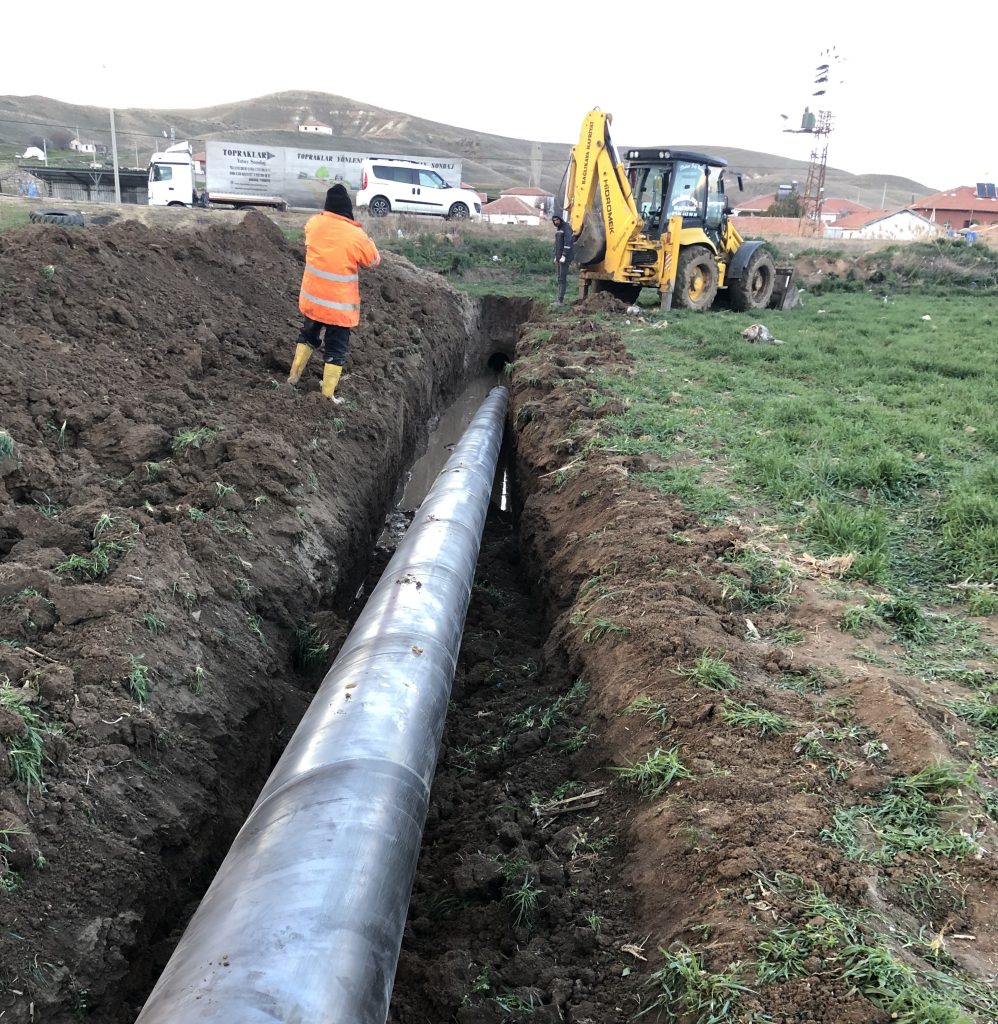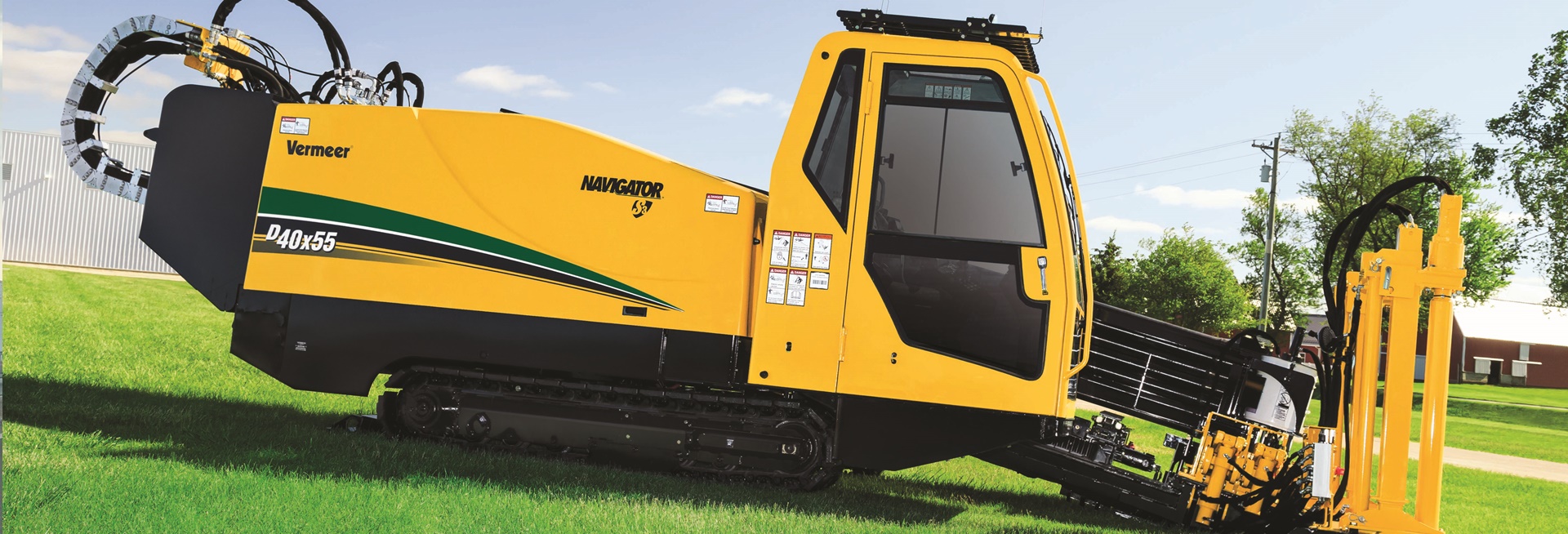
APPLICATION METHODS DRAWING METHOD
PRELIMINARY
With the directional horizontal drilling method, a field trip is made on the routes where the pipe will be drawn and the area where the machine and equipment will be located is determined.
The existing geological structure on the routes to be crossed is determined, equipment and materials suitable for these geological structures are prepared, and materials and equipment are kept ready according to the geological situation in all kinds of infrastructure. Inspection if necessary
Pits are opened and the ground and geological structure are observed.
Topographic features on the route to be passed are determined, these features are transferred to paper and a directional horizontal drilling project is created.
At the beginning of all works and during the execution of the work, safety precautions (safeties around the machine, field curtain, warning signs, personnel safety, etc.) are taken.
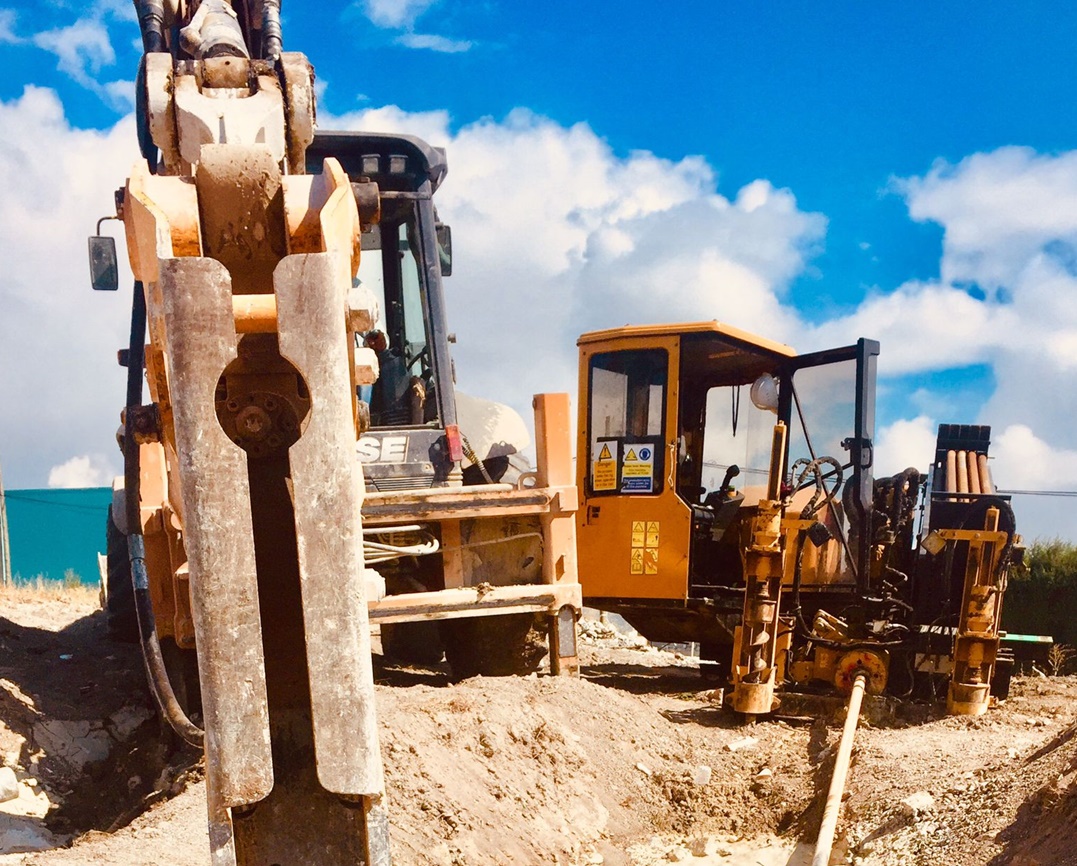
ORIENTATION AND PILOT HOLE
Following the completion of the preliminary preparations, after the desired depths are determined by the administration and/or administrations on the route to be passed, the position and entry angle of the Steerable Horizontal Drilling (YYS) Machine and its direction of orientation are determined by the tracking device according to these depths and the previously prepared project.
After these determinations are made, the machine is positioned and guided with a steering tip suitable for the geological structure.
During the guidance phase, the movement of the guidance tip underground (number of rods, depth and direction) is monitored with a digital tracking system above ground with the transmitter at the end of the probe, recorded at the end of each rod and marked on the ground.
In addition, thrust and torque forces are recorded during steering, giving an idea about the different ground formations on the route.
During the guidance phase, the standards and specifications specified by the administration and/or employer are complied with. At the end of the routing, an end of routing report and drawing is created with the recorded values.
Selection and preparation of the necessary equipment is made for horizontal drilling guidance and pilot hole application. This includes the drilling rig, pipe and guidance equipment. Equipment suitability and maintenance are critical to the success of the project.
Before starting the drilling process, a starting point suitable for the determined route is selected. The drilling machine is placed at this point and the drilling process is started. The pilot hole is usually started at a small diameter and then enlarged.
During the drilling process, special guidance equipment is used to guide the route correctly. These equipment allow drilling to proceed at the desired depth and angle. Real-time tracking and control systems ensure the route is followed accurately.
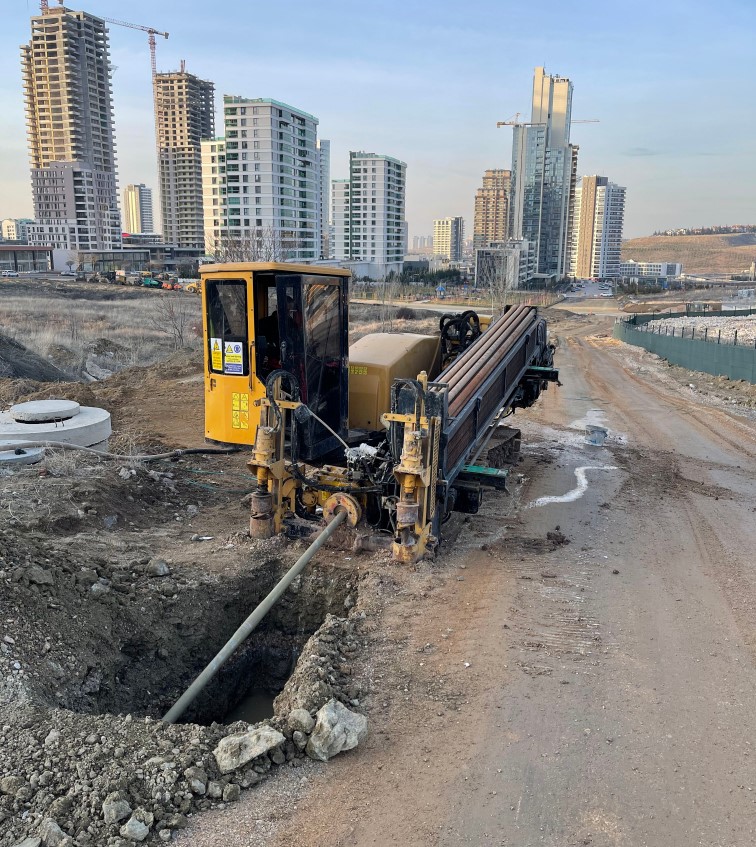
EXTENSION
Expansion heads suitable for the geological structure determined after the preliminary preparation work on the ground to be crossed are used.
After the routing and pilot drilling phase, the expansion heads are gradually removed and installed, with the routing end coming out of the route to be drawn from the pipe, from smallest to largest.
The expansion process continues until the tunnel is suitable for the diameter and number of pipes to be drawn.
If the length to be drawn is 50 meters or less, the hole to be opened is prepared to be at least 20% larger than the diameter of the pipe to be drawn.
If the length to be drawn is between 50-100 meters, the hole to be opened is prepared to be at least 30% larger than the diameter of the pipe to be drawn.
If the length to be drawn is between 100-150 meters, the hole to be opened is prepared to be at least 50% larger than the diameter of the pipe to be drawn.
If the length to be drawn is over 150 meters, the hole to be opened is prepared to be at least 100% larger than the diameter of the pipe to be drawn.
In order for the material in the tunnel to be created during expansion to drain well and not damage the pipe, drilling mud is prepared with chemical mixtures suitable for the soil characteristics. Drilling mud is prepared at a density that will provide the best discharge from the ground.
During the expansion process, expansion head pulling and torque force values are recorded and tunnel cleaning is monitored.
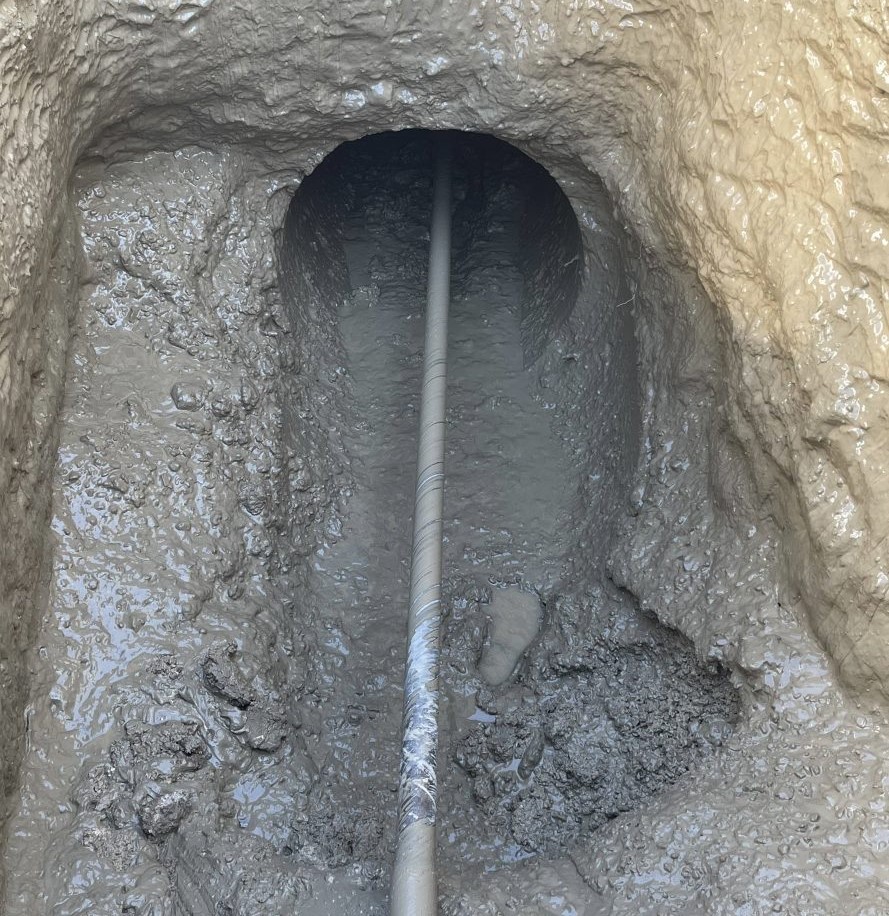
PIPE DRAWING
The pipe drawing process is completed in one go, without interruption.
Before starting to pull the pipe, all obstacles in the direction where the pipe will be pulled are removed and, if necessary, a channel is opened into which the pipe will be laid.
For pipe drawing, the pipe to be drawn must be fitted with a material that can withstand the pulling force. pull heads are installed.
Drilling mud to be created during the pipe drawing phase:
- It will make pipe pulling easier,
- It will ensure tunnel stability,
- Depending on the condition of the ground, it is reinforced with chemicals that increase viscosity and pump, lubricant and insulation.
In some cases, drawing fluids can be used to make pulling the pipe easier and reduce friction. These liquids are usually water-based and their viscosity can be adjusted. The fluid is injected into the borehole, helping the pipe advance more easily.
Continuous control and quality assurance must be ensured during the pipe drawing process. It must be ensured that the pipe is placed correctly and the pulling process proceeds as desired.
After the pipe pulling process is completed, it is necessary to clean the area and prepare documentation for the completion of the process. These documents may include shrinkage reports, photographs, and other documentation.
